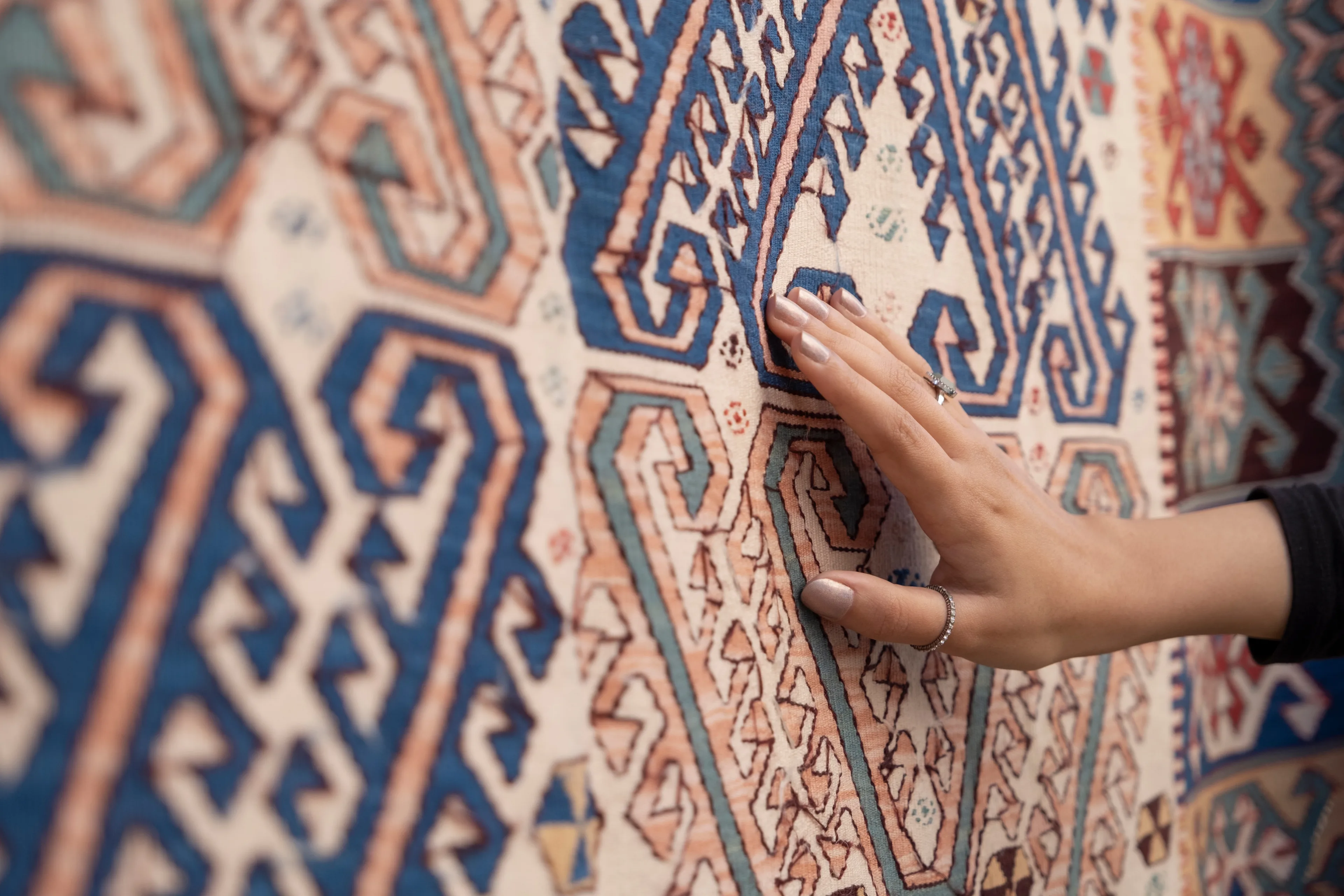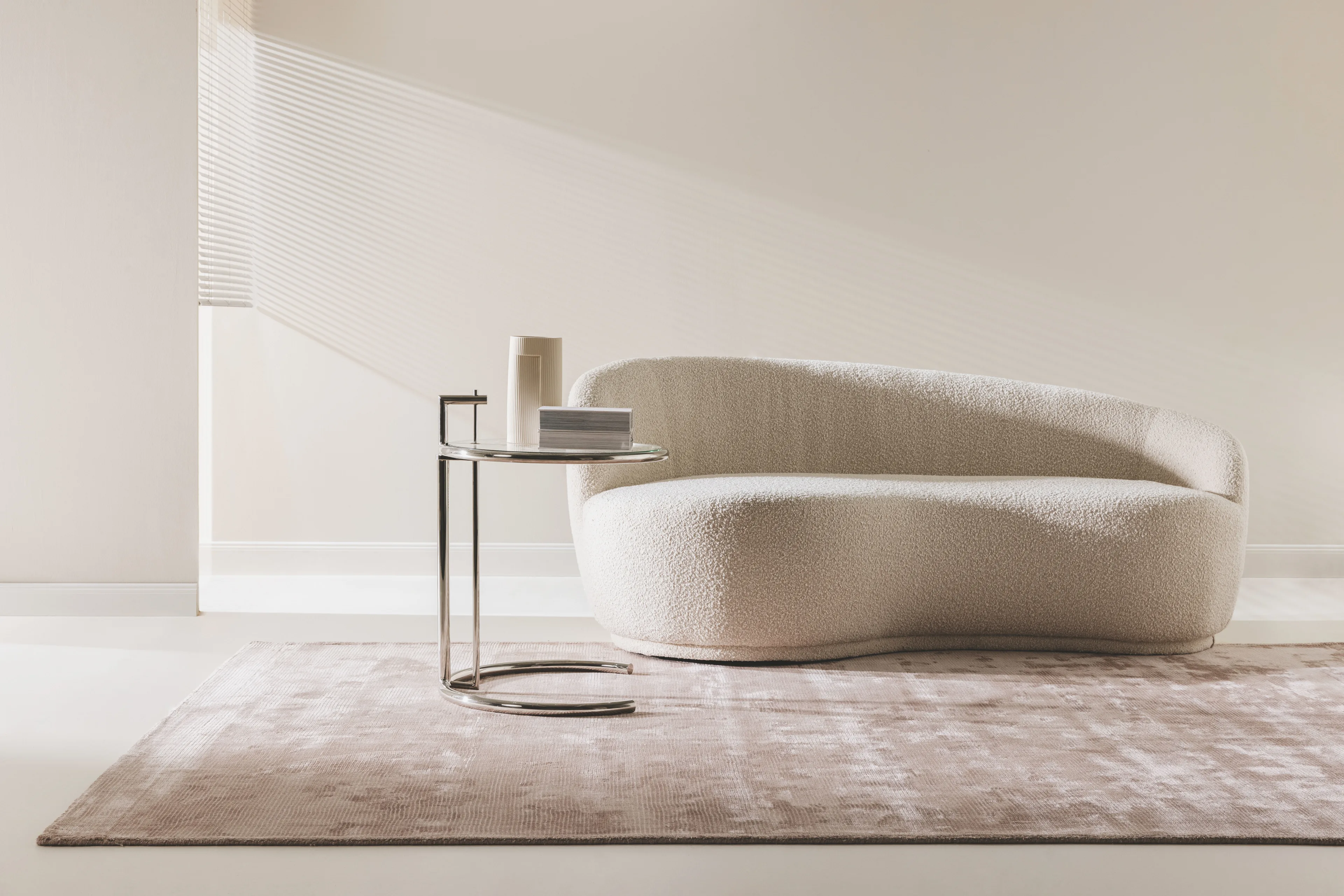Silk Rugs
Silk is the finest yarn used in rug making. The advantages of silk in a rug are in addition to the noble, shiny look, especially a soft feel and high tear resistance. Unfortunately, the iridescent fibre also has some drawbacks, because its production is elaborate and therefore expensive, sensitive to moisture and a pile of silk is much more sensitive and less robust than a wool rug.
A real silk rug is therefore more suitable as a decorative element and should not be designed in living areas that are heavily used.
In rugs, silk is usually used to create contours in the pile. Silk is mainly used in knotted and hand-tufted rugs. Very high quality rugs are made entirely of silk. These include smaller rugs from the Persian provinces of Isfahan, Nain, Ghom, Keshan and the Turkish region of Hereke. These fine rugs have a pile, warp and weft of silk.
Since these rugs are considered to be very valuable, there are also fakes on the market. Indian and Chinese rugs made of artificial silk may sometimes look deceptively similar to genuine silk rugs but are less durable. As with the term “Oriental carpet”, whenever rugs are touted as real silk rugs, you should always be careful. A burn test is recommended to see if the wrestling is genuine. Real silk fibres smell of burning hair when burned, whereas vegetable silk imitations such as viscose or mercerised cotton give off a white smoke and smell of burned paper. Imitations of synthetic fibres melt together when exposed to heat. So you can peel off some rug fibres and lightly burn the authenticity of the silk test.


